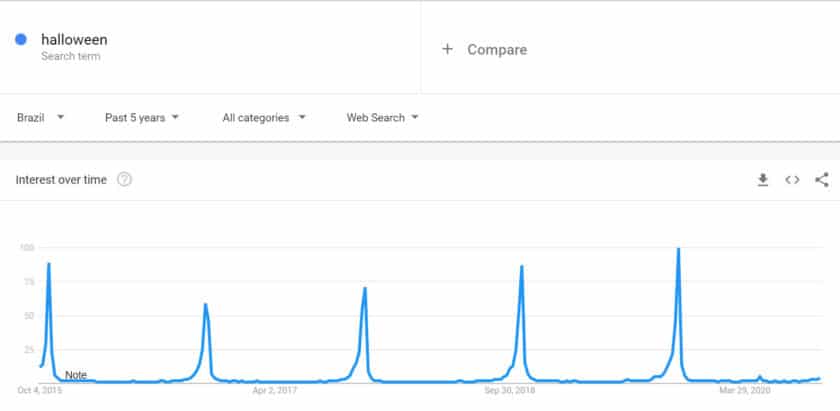Every SEO strategy is based on producing relevant, quality content. We often find opportunities for traffic generation but do not have the resources to produce the content. In this article I will present some topics to be evaluated for prioritizing content production.
Index
- Keyword Conversion
- Positioning of direct competitors
- Probability of classification
- Quantity of content required for rating
- Searches of your audience
- Seasonality: perishable or evergreen content
- Time to get to the first page
- Possibility of featured snippet in the SERP
- Reach and backlinks opportunity
- How to prioritize content production?
In many companies it is common that there is no dedicated SEO project team. In others, who choose to outsource the production, there are not enough financial resources to produce all the recommended content.
At this time, it is important that the SEO professional in charge or the agency in charge establish priorities for the production of the content. If the company has data on the revenue generated per article or category, this task becomes easier. But what if we don’t have this data?
Here are some topics to consider when prioritizing content production in your company:
- Keyword Conversion
- Positioning of direct competitors
- Probability of classification
- Quantity of content required for rating
- Searches of your audience
- Seasonality: perishable or evergreen content
- Time to get to the first page
- Possibility of featured snippet in the SERP
- Reach and backlinks opportunity
Read also: Less content = more conversion
We will see more information on each topic below. Remember that they are not in order of priority. It is convenient to look at all of them when it comes to prioritizing what should be produced.
Keyword Conversion
One of the simplest ways to prioritize what should or should not be produced is to look at the conversion rate of the keywords. Is one term converting more than another? Give it priority.
In the analysis of this indicator it is convenient to observe, in addition to the organic search results, the performance of PPC (sponsored link campaigns). Keywords with high conversion rates in campaigns are a great opportunity for organic content.
Read also: SEO and PPC: Combining for Better Results
Positioning of direct competitors
If your competitors are able to position themselves on the first page of search queries, there is a good chance that you will too. On the other hand, if more than half of the first page results are from aggregator sites, it can be very costly to try to rank for a particular subject.
Probability of classification
Google and other search engines know what your site is about. If you decide to produce content that is at odds with what the search engine knows about your site, you may have relative difficulty ranking this content.
For example, in my blog I talk predominantly about SEO and analytics. Let’s say I want to rank for “pizza recipe”. Google is unlikely to rank my content on the first page, even if it is well produced content.
It is much easier to rank for topics that you already write about and that the search engine understands as being part of your core business.
When analyzing the probability of ranking, take into consideration the competition for the subject you want to write about. Some topics, because they have a low volume of publications/competitors, are easier to rank for.
Quantity of content required for rating
Just as likely, if the search engine does not see you as an authority for a certain topic, the less likely you are to rank well.
But let’s say you are launching a new line of products or services. You must start producing content “from scratch”. Now suppose I have a travel blog and want to rank for pizza recipes. It might make sense, since tourism and cuisine are strongly related. In this case, it is advisable to do a lot of research on how much content you will need to produce on a certain subject in order to achieve the desired visibility.
Searches of your audience
Now, if your audience is searching for a certain subject, it makes perfect sense to produce content taking this into consideration.
Prioritize the production of content that your target audience is looking for!
Give preference to keywords with high search volume. Cross-reference these words with those that have an acceptable level of competition and you have a good list of opportunities.
Seasonality: perishable or evergreen content
What is evergreen content?
Evergreen content is content that is always relevant and does not require constant updates. You see, all content demands attention from time to time. It turns out that evergreen content is less susceptible to time.
What is perishable content?
Perishable content is time sensitive. It is content that has a great relevance in the short term but its demand is quickly extinguished.
Certain content is more appropriate at certain times of the year. For example, writing about Halloween in September or October may be much more relevant than in May or June.
As you can see in the image below, this keyword usually gains search interest between September and October, but remains dormant during the rest of the year.

You can use Google Trends, Google Alerts, and other word tracking tools (e.g. SEMrush) to track some trends.
Time to get to the first page
This indicator is a little more advanced but very important to take into consideration. All content, after being produced, takes some time to be ranked. It happens that, in some cases, the time it can take for a piece of content to rank on the first page may be so great that it is not worth the effort.
Look at the average time it takes for content produced on your site to rank on the first page. Some sites, in less crowded environments, achieve significant results in one or two weeks. In other cases, it may take four to eight weeks for this to occur.
Prioritize according to your needs. If you need to rank in a short amount of time, prioritize content that has that ability over content that may take longer.
On the other hand, if you can afford it, put those that tend to take longer to rank at the beginning of your lineup. Some content may take a while to rank, but when it does, it generates good results. Plan the production of your seasonal content in advance. The editorial calendar is your best friend at such times.
Possibility of featured snippet in the SERP
Take a look at the keywords you are trying to rank for and look at the SERPs (search results). Do you see answer boxes, knowledge graphs, images, lists, related search carousel, and other enhanced results? If you seerich snippets frequently for terms you want to rank for, consider this factor when discussing internal features of your site.
The presence of many rich snippets can significantly impact (for the better if it’s in your favor or worse if it’s in your competitors’ favor) the CTR of your pages. In case your competitors dominate the enhanced results, even if you are on the first page you may not get a good click-through rate.
Reach and backlinks opportunity
Not all content gains, from its reach, a significant amount of backlinks (links that point to it).
If you have a rich content and want to give it relevance, do a lot of linking. Producing content and working on internal and external linking is more important than just producing a flurry of content.
Read also: 6 mistakes in website structure and how to avoid them
How to prioritize content production?
If you don’t have revenue data and are still in doubt about how to prioritize content delivery, here are some questions that can help prioritize:
- Does this content convert in my sponsored link campaigns?
- Did this content originate from my target audience’s searches?
- Is it seasonal content, a one-time event, or evergreen?
- Does my direct competition have content on this topic and is it managing to rank on the first page of search?
- Am I likely to rate for this content?
Questions that may indicate that you should not prioritize content:
- Will I need to produce many pieces (more than 5 or 6) from this topic to rank?
- Is the SERP for this topic filled with improved results?
- Does it take me a long time (more than a month) to get new content ranked?
Each site is unique and some questions may be more important than others, depending on the segment. Evaluate your priorities based on site performance, need, and overall goals for your content, and add or remove questions that make more sense for your reality.
I hope these tips can help you define which content deserves priority in your SEO strategy.
Continue reading: Content SEO: Optimizing Content for Search
